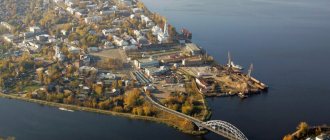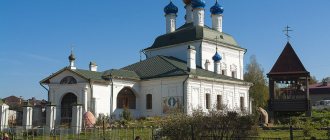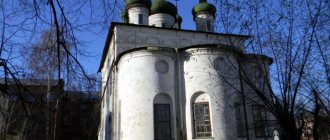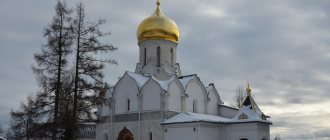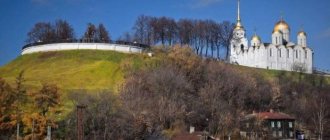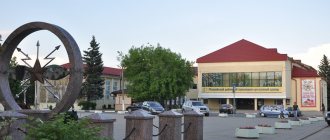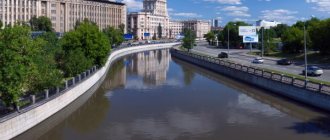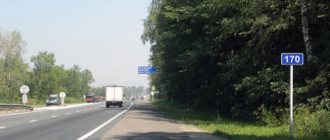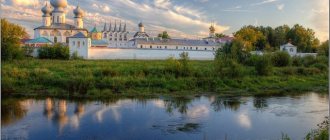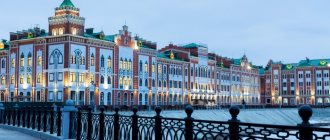Essentuki is known to us as the most famous mineral water in Russia. To get acquainted with the homeland of Caucasian Narzan from MinVod, we went straight to the resort and today my article is about Essentuki attractions in one day. People go to KMV not to relax, but to get treatment, and among them Essentuki is a health resort that heals many digestive ailments with water. You can drink healing water here completely free of charge and in any quantity; the only restrictions are doctor’s testimony.
Features of Essentuki that you need to know about
Before Essentuki became a city, it was called the village of Essentuki. And they turned into a resort after local Cossacks noticed the healing properties of local water and began to dig homemade pits - baths to heal wounds after battles. The unique deposit of mineral water has made this place the best gastroenterological resort in the country.
Now Essentuki is a cozy green town with almost 30 sanatoriums, the treatment of which is based on the use of the healing powers of underground springs, which are considered one of the most mineralized waters in the world. What we buy in supermarkets is water that has lost most of its beneficial properties; real medicinal water can only be tasted in pump rooms. I was convinced of this from personal experience - I was never able to find purchased water that tasted similar to the original.
What to see in Essentuki in winter
If the question arises about what to see in Essentuki in winter, we will answer right away: the same as at any other time of the year. Essentuki is an all-season resort. The climate in this area of the Caucasian Mineral Waters is continental, mountain-steppe. The winter is not cold, there are thaws with positive temperatures, especially in recent years, but serious frosts are not excluded. The main thing is to be prepared for any vagaries of the weather and dress correctly. Therefore, when going on a trip, do not forget to check the weather forecast.
Weather in Essentuki
Resort Park
The park contains most of the drinking and bathing buildings, and the healing factor here is environmentally friendly air, called climatotherapy. Conventionally, it is divided into three sections: Lower, Upper and Panteleimonovsky.
The large resort park is a great place to enjoy nature and not think about anything. On its territory there are pump rooms with the famous mineral water of Essentuki 4 and 17, walking paths with three routes of varying lengths, which are intended not only for leisurely walks, but also for rehabilitation after illness, and the bathhouse of Nicholas II. Today the park is being restored, its lower part and the main alley are in a state of disrepair and have long been in need of repair or reconstruction, and it is nice to see that it is being improved.
Where is it: st. Krasnoarmeyskaya 13, nearest stop “Mud Cure” minibuses 6, 9, 21
Admission: free, daily from 10.00 - 21.00, you can drink water in the pump rooms for free
Museums in 1 day
In Essentuki there is only one museum so far - the Museum of History and Local Lore. V.P. Shpakovsky , located in an old mansion of the early 20th century near Teatralnaya Square. The museum was founded in 1963, now it bears the name of its creator - the director of the pedagogical school V.P. Shpakovsky. The main, permanent exhibition occupies six rooms on the second floor of the building. Among the exhibits are paleontological and archaeological collections telling about the distant past of the Pyatigorye region and the peoples who inhabited these places. The exhibits in the nature section reflect the peculiarities of the climate, flora and fauna; there are stands dedicated to the main wealth of the resort's mineral resources - mineral waters.
The museum exhibits many rare photographs, documents, and household items from resort souvenirs to furniture. In a separate room there is a furniture set from the 18th century, inlaid with bone, which is believed to have belonged to the daughter of Peter I, Elizaveta Petrovna. The ground floor hosts a variety of temporary exhibitions, as well as an art salon.
The building of the Essentuki Museum of History and Local Lore named after. V.P. Shpakovsky Photo: © svdun
Theater Square and Singing Fountain
Theater Square is a small square in the center of Essentuki in front of the entrance to the Resort Park; all official and festive events are held here. The main highlight of the square is a large singing fountain without a bowl, hidden in the paving stones of the square itself, so when the water is turned off it becomes invisible. And in the evening hours, accompanied by classical music, the streams of water shimmer with all the colors of the rainbow.
Where is: Teatralnaya Square, Kislovodskaya, 2
Tsander Institute of Mechanotherapy
The colorful architectural structure located in the Resort Park from the outside resembles a European villa with half-timbered elements - when the walls are decorated with contrasting beams. Mechanotherapy is the only ancient health resort in Russia, the ancestor of modern fitness centers. And also the only place in the world where all 64 devices of the Swedish scientist Zehnder, installed here in the 19th century, work. Many Zehnder simulators can be seen in museums in New York and London, and in Essentuki it is a living museum where you can try out the exhibits for yourself. Moreover, the effect of local mechanotherapy was clearly advertised in the Soviet film “Love and Doves”, when Gurchenko sat on a strange shaking device - one of Zehnder’s devices.
Where is it located: in the Resort Park
Opening hours: Mon - Fri 9.00 - 15.30, Sat 9.00 - 13.00, closed on Sunday
Entrance: excursion - 65 rubles, training on simulators - 260 rubles / 60 min.
Nikolaev baths
Nicholas Baths is a majestic, well-kept building of the last century with a rich history and preserved marble baths, located in the Resort Park. The historical baths have been preserved only in the right wing; they are made in the Roman style - below the floor. In the imperial baths, inhalations with mineral water are carried out; you can take several types of baths - mineral and hydrogen sulfide, and undergo an underwater massage course. However, in order to sign up for procedures, you need to go to an appointment with a physiotherapist who sees Semashko at the mud baths.
Opening hours: Mon - Fri 8.00 - 13.00, Saturday until 12.00, Sunday - closed
Entrance: adult tour - 70 rubles, children - 60 rubles. Taking a bath - from 340 rubles. for one procedure, but you won’t be able to just lie in the baths without taking tests. Physiotherapist prescribes procedures
Where is it located: in the Resort Park
Balneological and mud bath named after. Semashko
Balneological and mud bath named after. Semashko is both a working mud bath and an architectural monument of Essentuki. The monumental building amazes with its beauty; according to the architect’s plan, it needed to be given the semblance of Roman baths, so it is designed in an antique style with statues of mythical gods, bas-reliefs and stained glass windows. The sanatorium has survived to this day almost in its original form, although it is a legacy of Tsarist Russia and Soviet times. Chaliapin, Yesenin and Voroshilov took healing baths within its walls.
In the afternoon, you can go on a tour of the mud baths building and see everything without visitors. You can also purchase various products with you. In the balneotherapy clinic you can get a large number of different healing and rejuvenating procedures using healing mud from Lake Tambukan, prices start from 400 rubles. per session.
Opening hours: 9.00 to 13.30, Saturday from 9.00 to 12.30, Sunday - closed. Excursions - Tuesday Thursday after 14.00 hours
Entrance: excursion cost 150 rubles.
Where is it located: near the Essentuki Resort Park, within walking distance from the railway station at st. Semashko, 10. Nearest stop “Mud Cure” minibuses 6, 9, 21
Dacha Eagle's Nest
This three-story building in Russian Art Nouveau style was built during Tsarist Russia by police officer Zimin. With its elegant appearance with turrets and stucco, it stands out clearly against the background of the city landscape. It was nicknamed “Eagle’s Nest” because of the sculpture of three eagles sitting in a nest on the façade of the dacha. Today the building houses the Central Resort Library, so you can freely look inside under the pretext of leafing through a magazine.
Where is it: st. Andzhievskogo, 7 near the railway station
Best hotels in Essentuki
Related materials:
- 31 attractions of Novorossiysk to visit
- 32 sights of Kronstadt that are worth visiting
- 29 best attractions in Orel,…
- 26 attractions of Azov that are worth visiting
- 33 attractions of Bakhchisaray that are worth visiting
- 34 best sights in Omsk that are worth seeing
- 29 best attractions of Chelyabinsk,…
- 29 attractions of Makhachkala that are worth visiting
- 28 best attractions in Belgorod,…
Did you like the article? Share with friends:
1
Drinking gallery "Fivethousander"
The Pyatysyachnik drinking gallery is a grandiose pump room, the largest on the CMS and, judging by the name, designed for a huge flow of vacationers. The building is shaped like a circle with a transparent dome in the middle. The gallery is located on the territory of the Victoria sanatorium in a picturesque park. There are three colonnades with water in the huge hall. One is Essentuki 17, the second is Essentuki 4 and the third is Essentuki Novaya. The pump room is supplied with water of three temperatures - hot, warm and cold.
The spacious area of the pump room is used by the owners as a bazaar, so here you can stock up on fur coats, socks, magnets, cosmetics and other necessary things.
Entrance: free, plastic cup 2 rubles. If you want to pour it with you, then a purchased bottle costs 22 rubles. / liter, with your own container - 7 rubles. / liter
What to see in Essentuki in 1 day on your own
Essentuki is a small city, all its main attractions are located compactly within the resort area, it is quite possible to see them in one day if you plan routes wisely. We will try to help you with this by arranging the attractions in an order that is convenient for inspection.
Train Station
If you come to Essentuki by train, pay attention to the railway station . The Essentuki station was opened in 1893, and in May 1894, regular train service began on the Mineralnye Vody - Kislovodsk section. From the station, walk along Internatsionalnaya Street, where houses from the early 20th century have been preserved, to Teatralnaya Square.
Railway station "Essentuki" Photo: © Natalia Semchina
theatre square
Theater Square is the main square of Essentuki; all the main city events, folk festivals, festivals, concerts and fairs take place here, and an elegant Christmas tree is set up for the New Year. The square is a pedestrian zone, the main attraction here, of course, is the large Singing Fountain , the jets of which flow from under the asphalt. On hot summer days it creates a pleasant coolness, and in the evenings the light and music accompaniment is turned on, and the bright spectacle delights local residents and guests of the city.
Singing fountain on Teatralnaya Square Photo: © Anna Kudryavtseva
Among the favorite attractions of tourists on the square is the “Zero Kilometer of Love ,” where lovers make dates under the protection of Cupid standing on a pedestal, and tourists love to take pictures. The square also houses the Central Entrance to the Resort Park.
“Zero kilometer of love” Photo: © Anna Kudryavtseva
Concert Hall named after. F. I. Shalyapina
The square is called Teatralnaya because here is the Fyodor Chaliapin Concert Hall , a former touring theater where all celebrities give concerts and theaters that come to Essentuki on tour give performances. On such days, vacationers are brought here from sanatoriums in neighboring resort towns.
The Concert Hall is the largest concert venue in the resort, with three halls. A large hall with modern equipment and excellent acoustics, which can accommodate about one and a half thousand spectators. Touring theater and ballet performances and concerts take place here. A small cozy chamber music hall for 80 people and an organ hall. Essentuki can be proud; not every city has an organ! An organ from the German company Walker was installed in the concert hall in 2011; it is one of the largest organs in the country. The International Organ Music Festival is now held annually in Essentuki, which attracts Russian and foreign performers.
Concert Hall named after. F,I. Chaliapin Photo: © Natalia Semchina
Resort Park
Now it is difficult to imagine that the site of the park was once bare steppe, and the beautiful resort park of Essentuki is the creation of human hands.
The history of the resort park began in 1847, when Count Vorontsov, who in those years was the governor of the Caucasus, decided to green the Essentuki resort. “We need to think,” he wrote to the director of the Waters, “how to decorate this completely bare and ugly place, open to the winds from all winds, by planting trees.” And already in 1849, seedlings of trees and shrubs from the Tiflis Botanical Garden and from Warsaw nurseries began to be imported to Essentuki. At the same time, 2 companies of soldiers were sent to Essentuki to drain the swamp and establish a park, who planted 7.5 thousand trees in the park.
The park has four main entrances, and according to the terrain features it is divided into Upper and Lower. The lower part of the park is connected to the city center by a magnificent cascading staircase decorated with fountains. Vacationers went down the stairs to the Park Theater building, built in 1901. Here they walked in inclement weather, in the evening the Park Theater turned into a concert hall, where famous singers performed - Fyodor Chaliapin, Leonid Sobinov, the famous trainer A.L. Durov, and in 1927 - Vladimir Mayakovsky.
Photo: © Anna Kudryavtseva
Source Gallery No. 17
The main attraction of the resort is its healing mineral springs; they were first explored by Dr. F. P. Haaz, but did not attach much importance to them. All mineral water outlets in this area were studied in more detail in 1823 by Professor A.P. Nelyubin. In total, he described 28 springs, two of those springs are located in the resort park, are still working and their numbering has been preserved.
Not far from the main entrance to the park stands Gallery of the Source No. 17 , built of sandstone in the Moorish style in 1856 according to the design of Samuel Upton, the architect of the Caucasian Mineral Waters. Be sure to visit it; the gallery is decorated with light marble and decorated with stained glass windows and statues.
Be careful when drinking mineral waters; do not forget that this is a medicine that is drunk according to a certain regimen and in the amount prescribed by the doctor. But you can try to be aware. Also pay attention to the beautiful cast-iron gazebo made by Ural craftsmen standing near the gallery. In the second half of the 19th century it was a pavilion for the spring's pump room.
Gallery of source No. 17 Photo: © Anna Kudryavtseva
Musical gazebo "Rococo"
There is more than one gazebo in the park, but the Rococo musical gazebo is among the most popular attractions in the park. It was made in 1879 at the Rostov Iron Foundry using artistic forging techniques; musicians performed in the gazebo during the summer holiday season. Nowadays, this glorious tradition continues; in the summer, in the park, just like a hundred years ago, a brass band plays in a gazebo.
Musical patterned gazebo “Rococo” Photo: © Natalia Semchina
Tsander Institute of Mechanotherapy
A beautiful building, built in German half-timbered technology, is the Zander Institute of Mechanotherapy . In the seventies of the 19th century, the Swedish doctor Gustav Zander developed a system of mechanotherapy for the harmonious development of the body through systematic, dosed exercises of all muscle groups of the body. Zander invented more than a hundred devices for active and passive gymnastics. In 1902, many of them were purchased for the Essentuki resort and a special building was built to house them. Such devices were used in Europe, but there such institutions have long become museums, but here the ancient devices are in working order and continue to be used to improve people’s health.
Photo: © Anna Kudryavtseva
Source Gallery No. 4
Essentuki No. 4 is the most popular water in the resort city. The modern building of Source Gallery No. 4 was built in 1967; its facade is decorated with a ceramic mosaic panel on the theme of friendship of peoples. The first gallery building on this site appeared in 1893 above the source, where there was the most powerful outlet of mineral water. For more than a century, a ritual has been observed three times a day: hundreds of vacationers go to the park to drink water before eating.
Source gallery No. 4 Photo: © Natalia Semchina
Nikolaev baths
From Source Gallery No. 4 you can climb the stairs to the elegant building in the style of late classicism, St. Nicholas Baths . Until recently, they were called Upper due to their location in the upper part of the Resort Park on Alkaline Mountain. The mineral bath complex was opened in 1898 and named in honor of Emperor Nicholas II. And today they continue to treat vacationers with mineral water. The lawns at the entrance are decorated with a fountain and sculptures of Hercules and Doryphorus, symbolizing beauty and health.
Photo: © Anna Kudryavtseva
Historical buildings of sanatoriums
If you are interested in the history of the resort, pay attention to the historical buildings of the sanatoriums located in the park and around it. Not far from the Nikolaev Baths there is a sanatorium “Healing Key”. Its dormitory building occupies the building in which the city's first large comfortable hotel, Kompaneiskaya, was opened in 1875. Building No. 2 of the Rossiya sanatorium is the former Donskaya hotel, opened in 1903.
The Istok Hotel was built in 1903 by advisor Nikolai Bugrov and Nikolaev merchants, the Maltsev brothers, who received permission to build a stone two-story house for free accommodation of visiting “sick” people. Nikolai Bugrov was a Manufacturing Advisor, the Maltsev brothers were engaged in grain production, grain trading, they were of the merchant class and Old Believer religion, so the first name of the sanatorium was “Old Believer Sanatorium”.
The building of the Istok sanatorium, built in 1906 Photo: © Natalia Semchina
Mud bath named after N. A. Semashko
One of the most famous and beautiful buildings of the Essentuki resort is the Semashko Mud Bath . It was built in 1915 according to the design of the architect Eugene Schretter in the style of ancient Roman baths. The new mud bath was named Alekseevskaya, in honor of Tsarevich Alexei, the son of Emperor Nicholas II. For the second century, the mud bath annually welcomes hundreds of vacationers, using the healing silt mud of Lake Tambukan for treatment. In front of the building, the ancient Greek god of healing Aesculapius (Asclepius) and his daughter Hygieia, the goddess of purity and health, sit on the “thrones”. These sculptures were created by A. A. Dietrich and V. V. Kozlov.
Photo: © Anna Kudryavtseva
Victory Park
Victory Park is over a hundred years old; it was founded in 1903 and designed according to the canons of English landscape parks, which is why it received the name English. It became Victory Park in 1985 for the 40th anniversary of Victory in the Great Patriotic War. In the square in the center of the park there is a stele and the Eternal Flame burns. Urns containing soil brought from Mamayev Kurgan in Stalingrad and other places of military glory are buried here.
The park is planted with many species of plants, including rare ones; it resembles a real forest. There are walking paths throughout the park, as well as two therapeutic paths that differ in the degree of physical activity on patients, starting at the gallery of mineral springs. Route No. 1, 2,200 meters long, runs along the central alley of the park, and route No. 2, 2,900 meters long, runs along the outer alleys of the park.
Winter Victory Park Photo: © Kislota
Gallery "Fivethousander"
It’s not far from Victory Park to the Victoria sanatorium, the complex of which includes the famous largest drinking gallery “Pyatysyachnik” with all types of Essentuki mineral water. The gallery received this name because it can serve more than 5,000 vacationers per shift. This gallery is not only the largest in the Kavminvody, but also one of the largest in Europe. The round gallery building was built in 1990; it is worth visiting not only to appreciate Essentuki No. 4 and No. 17, as well as Essentuki-Novaya, but also to admire the spectacular interiors.
Despite the fact that the gallery is located on the territory of the Victoria sanatorium, it serves not only vacationers in the sanatorium, but also everyone. The park of the sanatorium also deserves attention; there is a lot of interesting things there, especially for selfie lovers: sculptures, monuments, gazebos.
Gallery “Five-thousander” from above Photo: © Website of the sanatorium “Victoria”
More information in the material Sights of Essentuki
Essentuki temple complex "Rio de Caucasus"
Once on the site of the religious complex there was an industrial zone, but after the Greeks came here, the first temple arose on the former landfill. It’s worth visiting not only for believers and tourists, but for children there is a petting zoo, a pool with turtles, a small museum of Soviet-era transport - Lada cars and trucks, and a park area.
Within the Holy City of Jerusalem Park there are several different Orthodox churches in different styles, which are smaller replicas of famous churches around the world. There is also a local landmark here, the largest statue of Christ in Russia, 22 meters high, where there is a chapel under a snow-white pedestal. In good weather you can see Elbrus from the statue.
“Rio de Caucasus” is an excellent example of how an ordinary landfill can be turned into a place for cultural recreation
Where is it located: on the outskirts of the city on Borgustan highway, minibus 10 stop “Ulitsa Krainaya”
Admission: free, open daily from 8.00. until 23.00
Sights of the surroundings of Essentuki
Rio de Caucasus
Rio de Caucasus
Located on the outskirts of the city. The temple complex received its name because of the huge sculpture of Christ located on a hill. So the analogy with Brazil immediately suggests itself.
This place is something between a recreation area and a church ensemble. Temples and chapels (all recently built) are located next to picturesque nature and good recreational infrastructure. A very popular location for family holidays.
Address: Borgustanskoe highway, 30, Essentuki, Stavropol region
Honey Falls
Honey Falls
More than 30 km from Essentuki there are famous waterfalls. More precisely, these are 5 waterfalls on the Alikonovka and Echki-Bash rivers. You can get to the waterfalls through the gorge, along a path with stone steps.
Ecotourists value these places for their picturesque rocks, almost untouched nature and a fairly simple route.
Address: Kislovodsk, Stavropol region
Entrance: for adults - 60 rubles.
Ring Mountain
Ring Mountain
A natural monument that appeared as a result of soil weathering and rock erosion. Ring Mountain is located 20 km from Essentuki (closer to Kislovodsk). It is a through cave, similar to a ring hanging on the edge of a cliff.
According to legend, you can attract good luck if you stand “inside” the ring. But this is quite risky - there are often rockfalls here.
Address: Stavropol region, southern spur of the Borgustan ridge
Mount Mashuk
Mount Mashuk
Mount Mashuk is located 25 km from the city. This is some kind of universal attraction. It has gentle slopes, making it suitable for simple mountain hikes. From the observation platforms of the mountain there are magnificent mountain views of Beshtau, and sometimes of Elbrus.
And finally, this is a rare case when a natural monument is known to all literary connoisseurs. It was on the slope of this mountain that Lermontov fought with Martynov.
Address: Mount Mashuk, Pyatigorsk, Stavropol Territory
St. George's Convent
St. George's Convent
A convent rises 8 km from the city center. This is a relatively new attraction. The monastery was opened in 2006. And the construction of the monastery complex continues to this day.
The Church of St. George the Victorious, lined with white marble, with magnificent paintings inside, deserves special attention.
Address: Kislovodsky Lane, Essentuki, Stavropol Territory
Opening hours: daily from 8:00 to 16:00
St. George Convent
St. George's Convent is not only a holy place, but also a gorgeous observation deck located on a hill. The monastery is located on a mountain, offering stunning views of the surrounding area, Essentuki, the Caucasus Range and Elbrus. A piece of the relics of St. George the Victorious and a piece of his tunic are kept here. The area around the monastery is well-groomed, with thujas and flowering flower beds planted around the perimeter. The complex includes the St. George Church, a chapel, a bathhouse and a tower with bells. Nearby are residential buildings for nuns and the Sofia shelter for orphan girls with a difficult fate. Today this is the only convent in KavMinvody.
There are very tasty pastries and monastery cheese here, you can get holy water from a silver bowl
Opening hours: the doors of the Temple are open to everyone from 7.00 to 19.00
Where is it located: located on the federal highway Mineralnye Vody - Kislovodsk, 8 kilometers from Essentuki
Where to go from Essentuki for 1 day
If you are already familiar with Essentuki, or you just have some free time, you can spend it usefully, depending on your preferences. We offer the following options:
Pilgrimage tour
There are many holy places in the Stavropol region that attract pilgrims. In Essentuki you can visit several interesting churches without leaving the city. In the resort area of the city stands the Church of St. Panteleimon , recreated a century later on the site of a church built specifically for the resort public and consecrated in 1896. The temple, which was the centerpiece of the resort, was closed and then demolished in the 1930s.
Outside the resort area there is a beautiful wooden church of St. Nicholas the Wonderworker , built in 1826 by the Cossacks of the village of Essentuki according to the design of the Bernardazzi brothers. It contains memorial plaques on which are carved the names of Cossacks who received high military awards in the Russian-Turkish War of 1877–1878 and the Russian-Japanese War of 1904–1905.
In Essentuki there is an unusual Temple complex in the name of the Holy Apostles Peter and Paul . In addition to the Church of Peter and Paul, it includes the Church of the Assumption of the Blessed Virgin Mary in the Byzantine style and four chapels: Elijah the Prophet, the Life-Giving Trinity, the Resurrection of Christ and the Assumption. There are a lot of interesting things on the territory of the complex, but the most unusual thing is the statue of “Blessing Christ”, 22 meters high, installed on a hill.
Not far from Essentuki on the Holy Mountain of Dubrovka stands the St. George Convent . This is a new monastery, officially opened in 2006. There is a shelter at the monastery for girls whose parents have been deprived of parental rights.
Essentuki is a multinational city; the city also has the Armenian Church of St. Hripsime (Surb Hripsime), consecrated in 2011.
Photo: © Anna Kudryavtseva
Trip to neighboring resort towns
If you have some free time, you can go explore neighboring resort towns. All of them are located quite compactly, accessible for an independent trip, and it is quite possible to explore the main attractions in one day.
The closest city to Essentuki is Pyatigorsk , which can be reached by train in less than twenty minutes. This is the largest of the resort towns of the Caucasian Mineral Waters, so you will have to set your priorities and decide what you want to see on this day. You may need to use public transport.
Pyatigorsk is conducive to leisurely walks. Start from the square where the monument to M. Yu. Lermontov stands, go past the Spassky Cathedral to the Flower Garden , admire the Lermontov Gallery , look into Diana’s Grotto . You can climb Mount Goryachaya , where the sculpture of the Eagle - the symbol of the Kavminvod, and admire the views of the city from above. Further along the stairs to the Academic Gallery , Lermontov's grotto and the Aeolian Harp . There is a choice: you can go to the famous “Proval” , take a photo with Ostap Bender, or take the cable car to Mount Mashuk . What if you get lucky and see the double-headed Elbrus? And someone is interested in Lermontov’s places in Pyatigorsk, Lermontov’s House and the place of his duel .
Here are some helpful tips for planning your trip:
What to see in Pyatigorsk in 1 day What to see in Pyatigorsk in winter
Reviews of tourists about the trip to Pyatigorsk
View of the city from Goryachaya Mountain Photo: © apreleva1409
Kislovodsk
Half an hour by train, and you are in the most popular resort city of the Caucasian Mineral Waters - Kislovodsk ! The attractions here begin immediately from the Railway Station , which was built in 1854 at the same time as the railway line connecting the resort towns. Walk up to the former Kurhaus, one of the city's main attractions. It was built opposite the station for the convenience of the resort public: once upon a time, vacationers who came from neighboring cities on commuter trains climbed the stairs from the station to the Kurhaus to attend concerts by the stars of that time. Now the building houses the State Philharmonic named after V.I. Safronov .
Take a walk along Kurortny Boulevard , the main tourist street of Kislovodsk, where resort life is in full swing at any time of the year, and in the summer everything is in flowers and there is a light and music fountain . The most beautiful buildings of the city are also located on the boulevard: the magnificent Main Narzan Baths and the Narzan Gallery have been serving the cause of improving the health of the country's population for more than a century and a half.
Be sure to leave time to visit the famous Resort Park of Kislovodsk, from which you will get great pleasure! There are a lot of interesting things there: the Glass Stream and the Ladies' Caprice bridge , the Red Stones and the Cascade Staircase . If the weather permits and there is time left, climb the Small Sedlo mountain , using the services of the cable car the “Valley of Roses” , the Blue Stones and the panorama of Kislovodsk from above Perhaps you will also see the handsome two-headed Elbrus!
If you plan to go, the following materials will be useful:
What to see in Kislovodsk in 1 day What to see in Kislovodsk in summer
Reviews from tourists about a trip to Kislovodsk
Kislovodsk Main Narzan baths Photo: © Natalia Semchina
